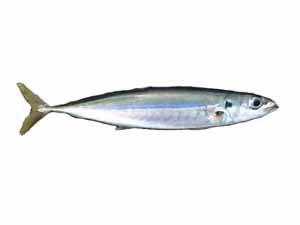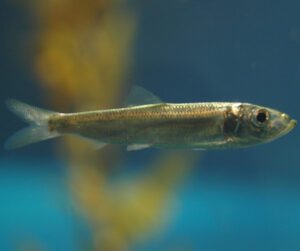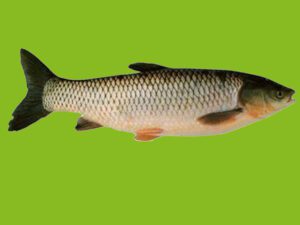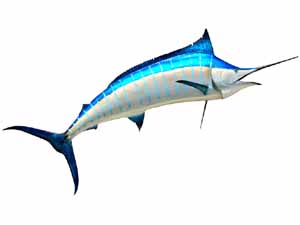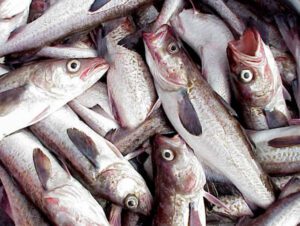The Narrow-Barred Spanish Mackerel fish is a species of mackerel fish of the Scombridae family. It is generally found in a wide-ranging area centering in Southeast Asia.
But it is also found as far west as the east coast of Africa and from the Middle East and along the northern coastal areas of the Indian Ocean. And it is found as far east as the South West Pacific Ocean.
It is commercially important and a highly targeted commercial and recreational fisheries in many parts of it’s range.
Total population of this fish decreased and currently it is listed as Near Threatened. Read some more information about this fish species below.
Narrow-Barred Spanish Mackerel Fish Characteristics
The Narrow-Barred Spanish Mackerel fish are the largest of all Australian mackerels. They are generally vivid blue to dark grey in color along their backs and flanks, and fade to a silvery blue-gray on the belly. They have scores of narrow, vertical lines down their sides.
The mature Narrow-Barred Spanish Mackerel fish can grow about 200 cm. And they can reach a maximum body weight of around 70 kg. The females are generally larger than the males. Photo and info from Wikipedia.
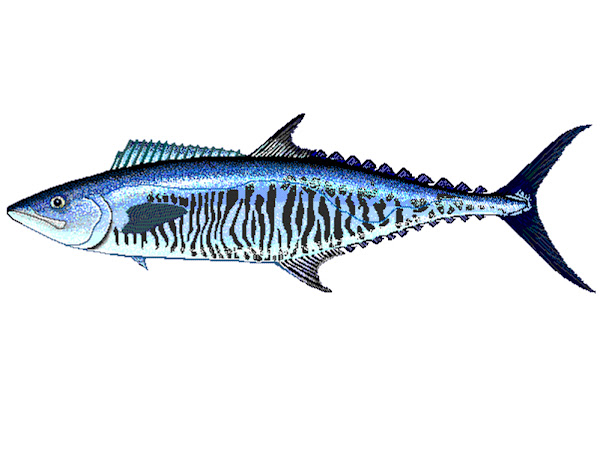
Diet
The Narrow-Barred Spanish Mackerel fish are voracious, opportunistic carnivores. They are mostly feed on the larvae and juveniles of small fish and crustaceans in the inshore environments.
But their main food consists of small fishes with lesser quantities of shrimp and squid.
Breeding
The Narrow-Barred Spanish Mackerel fish generally spawn in oceanic conditions on reef edges. Their spawning is seasonal, but it is protracted in the warmer waters of the tropics.
The females generally mature at about 2 years of age or when they reach around 80 cm in total body length.
Uses
The Narrow-Barred Spanish Mackerel fish is mainly used for food.
Special Notes
The Narrow-Barred Spanish Mackerel fish are found in a wide area centering in Southeast Asia (but also found as far west as the east coast of Africa and from the Persian Gulf and along the northern coastal areas of the Indian Oceans, and as far east as Fiji in the South West Pacific Ocean).
They are also found as far north as China and even Japan. They are common down both sides of Australia (as far south as Perth on the west coast and Sydney on the east coast).
The Narrow-Barred Spanish Mackerel fish are highly valued fish species throughout their range. They are a popular target by the recreational anglers.
Currently the fish is mainly used for food. And it is marketed fresh, dried-salted, frozen, canned and smoked. But commonly made into fish balls.
However, review full breed profile of this fish in the table below.
| Name | Narrow-Barred Spanish Mackerel |
| Kingdom | Animalia |
| Phylum | Chordata |
| Class | Actinopterygii |
| Order | Perciformes |
| Family | Scombridae |
| Genus | Scomberomorus |
| Species | S. commerson |
| Binomial Name | Scomberomorus commerson |
| Other Names | None |
| Breed Purpose | Mainly food |
| Weight | Can reach up to about 70 kg |
| Special Notes | Widely spread fish species, highly valued fish species throughout it’s range, popular target by the recreational anglers, mainly used for food, marketed fresh, frozen, dried-salted, canned and smoked, common made into fish balls |
| Breeding Method | Natural |
| Climate Tolerance | Native climates |
| Body Color | Generally vivid blue to dark grey in color along their backs and flanks, and fade to a silvery blue-gray on the belly |
| Rarity | Common |
| Availability | Indo West Pacific |

